Written by: Bea Combs-Hintze
We are in a self-contained vessel and all around us is the greatest source of life on Earth — the balancing force of weather and what makes our planet livable — our Oceans. However, this situation is actually a great paradox. Survival experts say that being a human stranded at sea is worse than being stranded in the desert: you have less chances of accessing fresh water, there is brutal sun with little to no cover, the dehydrating effects of salt, and no easily accessible food.
But on a ship, we have life supporting systems, maintained by a group of humans working together — humans crawling between giant diesel cylinders, cleaning, maintaining, checking wires, and feeding the other humans. Keeping the life-blood of the ship pumping through their routine checks and movements. In our metal home, working together, we are safe. Not only can we survive here, but we have all the comforts of home, and we can conduct scientific research. We can get close enough to the ocean to try and understand her a little more each time we set sail.
The mission of our R.V. Nancy Foster expedition: To map the seafloor of a new area on Blake’s Plateau using multibeam sonar. Just adding another puzzle piece to the global map of the ocean floor!
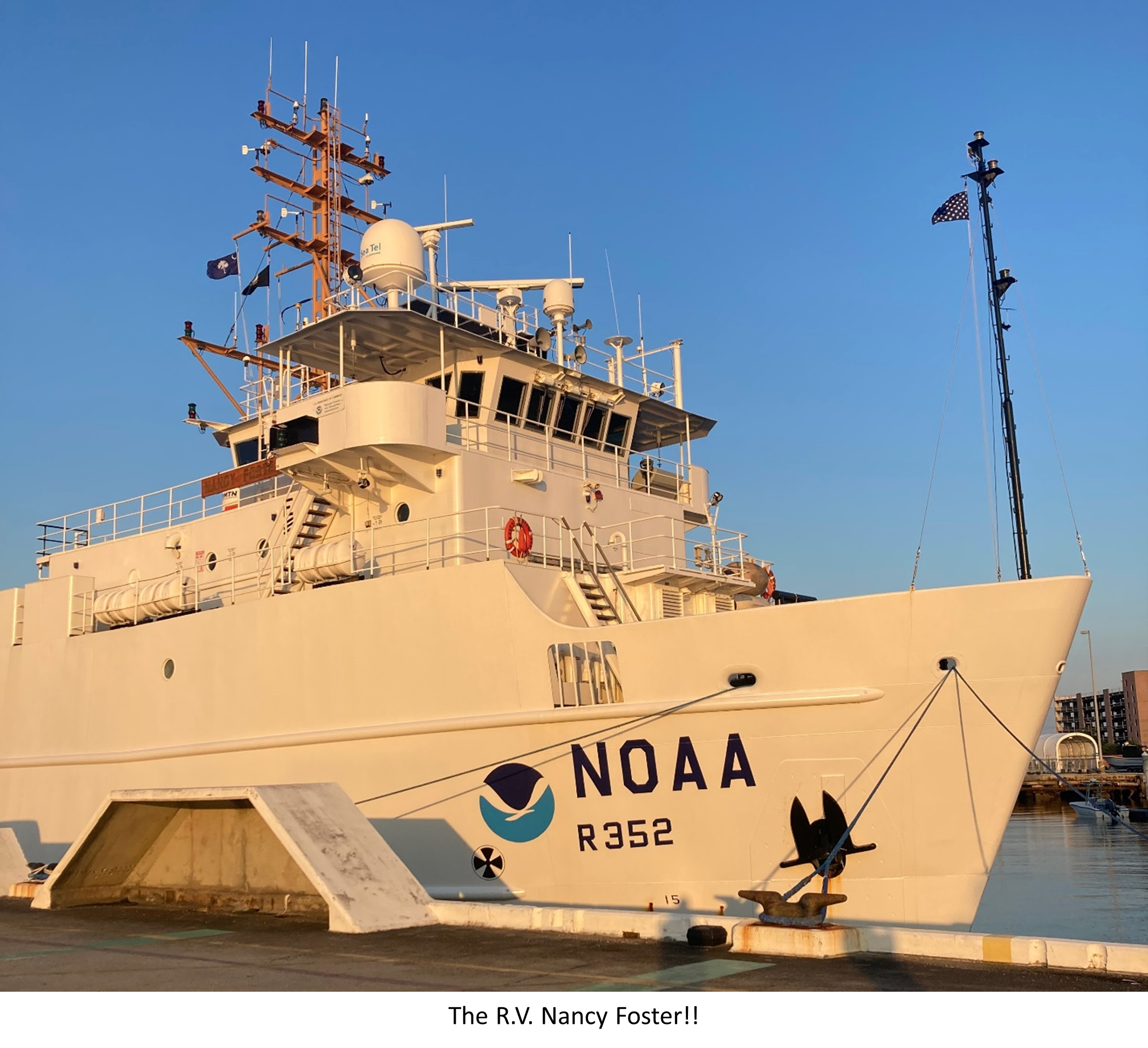
The ship functions as a single organism, the crew are like cells, individuals making up the whole. They all depend on each other, and each one has a specific and important role. From the captain to the cook.
There is a chain of command which is necessary for smooth operations. Who you report to, and who they report to, all the way up the line to the captain on the bridge (a.k.a. the upper deck of the ship where you have the best view of the water all around you — my favorite place to watch sunrise). The captain has the ultimate responsibility for the lives on board, safe navigation, and running drills to prepare the crew for any emergency.
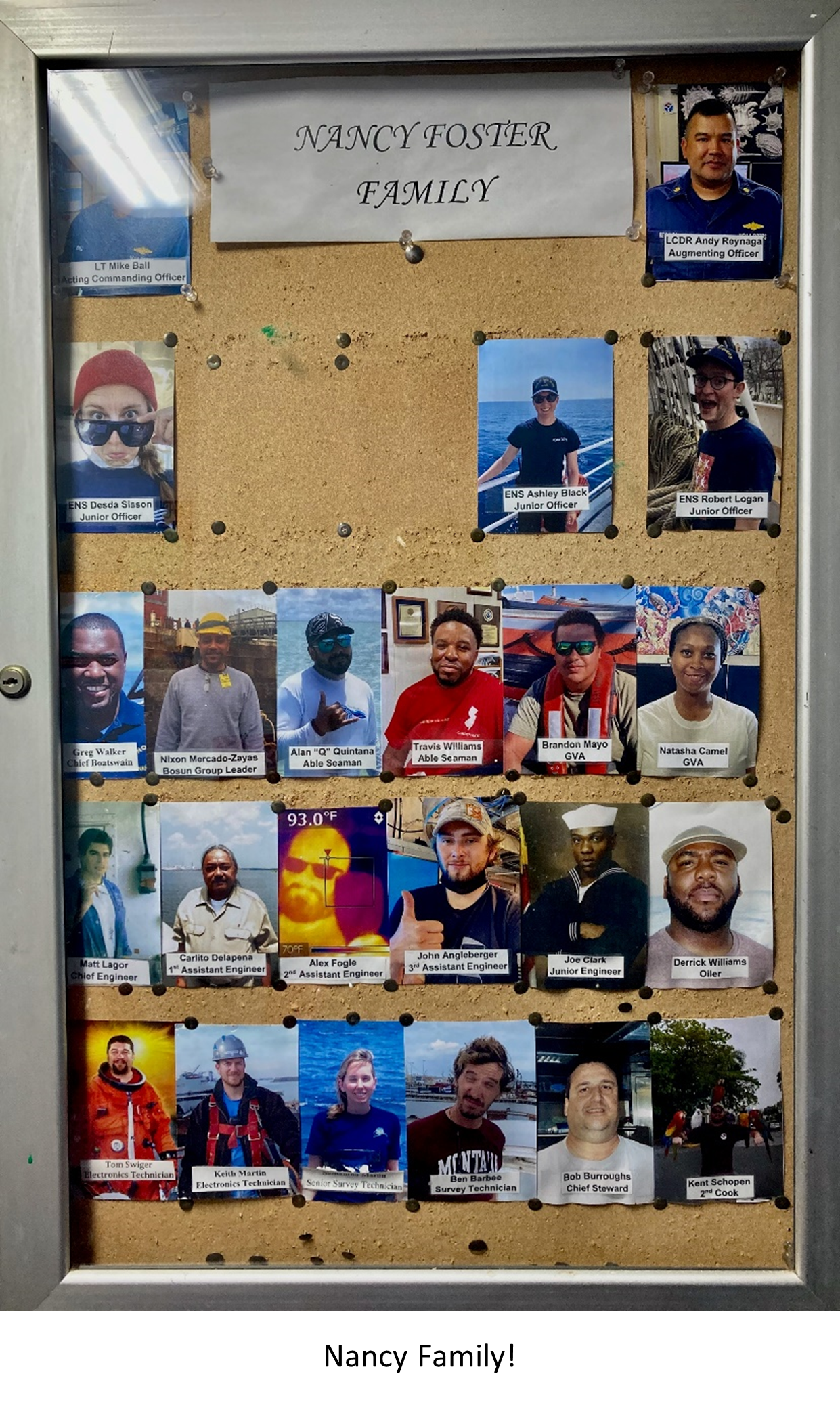
Most would agree that the cook or steward is higher up than the captain, though. I would say that if the captain is the brain, the steward is the heart. Without the nutrition they provide we are all useless. Despite our awesome technology and scientific advances, we are still just carbon based, muscle, flesh, and bones in need of the proteins, fats, and carbs that build and maintain our bodies. But delicious, nourishing food is good for the soul and morale. It keeps people happy, functioning and performing their jobs well. The stewards aboard Nancy Foster were fantastic; the food was delicious and you could taste the care with which it was prepared. Just like the ship, the galley must run smoothly, which is evident from day one. There are a lot of rules in the galley, the exact places to put dishes, trash, what to do when coffee runs out, when you are to report to meals, etc.
It is necessary to know and trust each other on board, to feel less like strangers and more like family no matter your role or length of time aboard. The crew of Nancy Foster seemed very tight knit, but were also welcoming to the rotating science party.
During my shift (4:00am – 12:00pm) I helped with all the tasks needed to complete the the mission. As a scientist in training I had the chance to experience a little bit of everything. Aboard a NOAA ship, the priority is science and discovery and being good stewards of our ocean and the data we collect and share. I was trained on the various software which do everything from charting and displaying the multibeam data as it comes in, to viewing and creating surfaces from the sonar estimations of depths which display as clouds of dense points. Cleaning up “flyers”, or points that are clearly outliers in the data, a process known as “Killing the Dots” and is surprisingly satisfying.
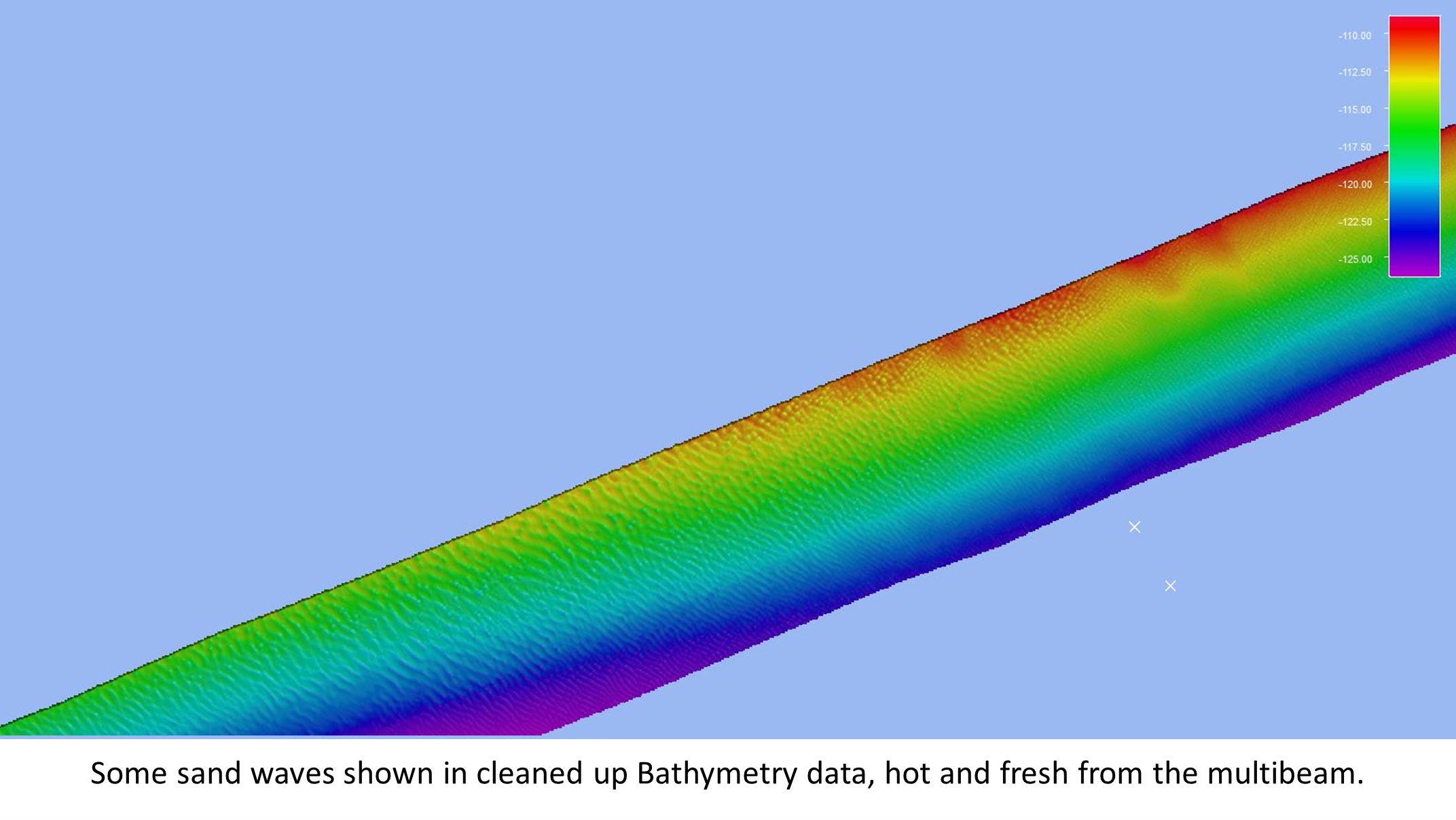
I also got to explore backscatter data, which is the reflection of the intensity with which sonar “pings” bounce off the seafloor. Softer bottom will return lower intensity data since it absorbs more of the sonar pings, while the opposite would happen in the case of harder bottoms. In my seagrass ecology research, I am very interested in using higher frequency backscatter to help distinguish seagrass patches from algae, and to get more detailed information about where smaller patches grow.
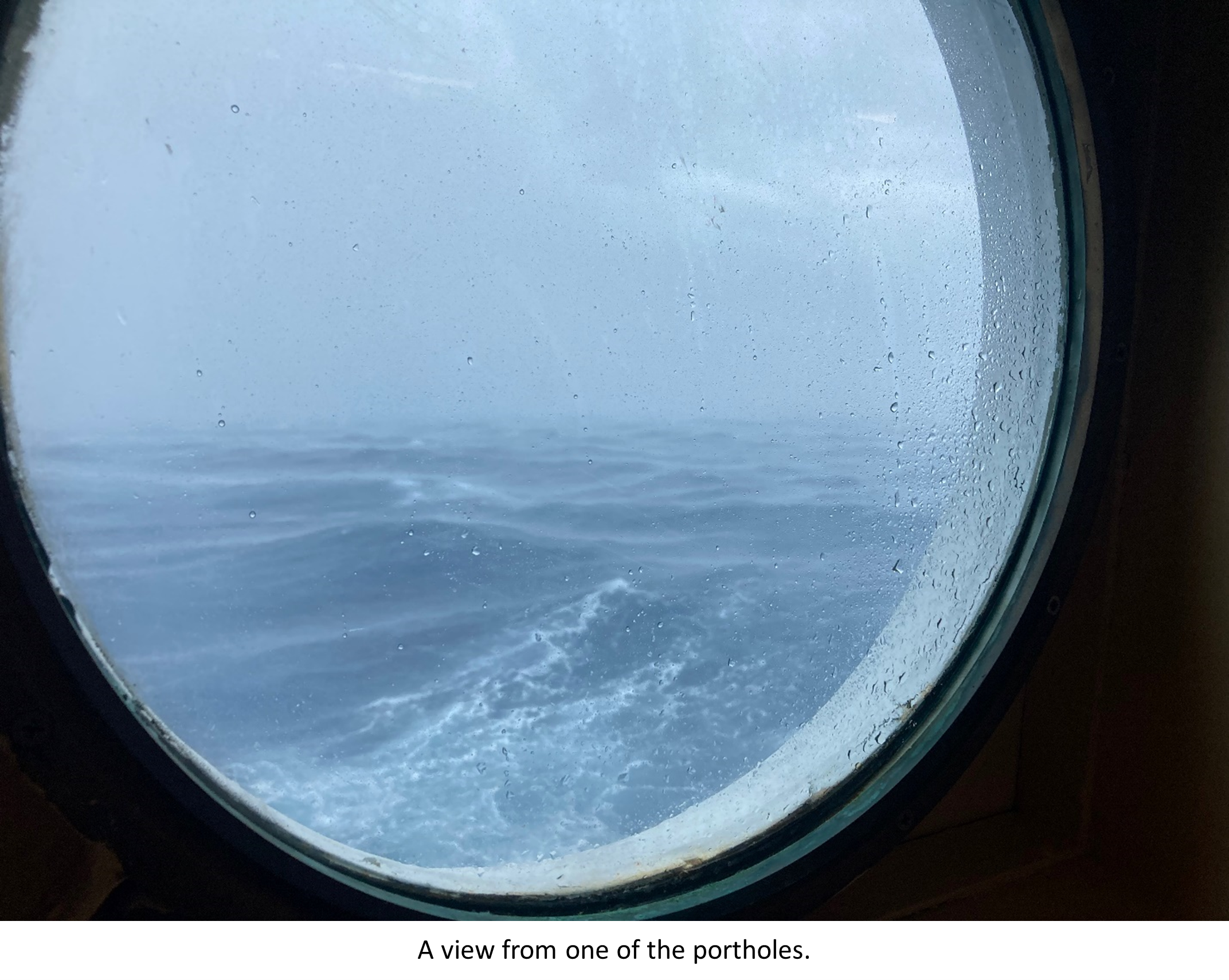
We can see schools of fish roving with the ~80 KHz echo-sounder (similar to what you would find on a recreational fishing boat — lower frequency and smaller swath than the advanced sonar that we were using to chart the characteristics of the seafloor). We can also see marine layers, like a parfait of life. Since water is “sticky” — meaning it bonds easily to itself — it has a high surface tension. There are layers of plankton that are trapped and existing happily in their tiny horizontal landscapes, not really able to move into the spaces above and below besides the water density they are biologically attuned to live in, water to them is thick jelly.
The water divides itself into layers based on its density and factors like temperature and salinity. Colder, saltier, more oxygen rich water will settle below warmer water. There is a point in the water column where the warm, sun-soaked upper layer quickly becomes cold. The position of this layer, known as the thermocline, can vary over time. It is important to measure because close enough to the surface, wind mixing allows for nutrients to make their way to the photosynthesizing plankton, which is the base of the marine food web.
Thermoclines are cool, and I got to help measure them!
We deployed CTDs from Nancy, which record Conductivity (which can be translated to salinity), Temperature, at different Depths. These are important data to collect for most every oceanography research cruise, but is particularly essential when you are collecting sonar data because the density of water influences how sound travels through it.
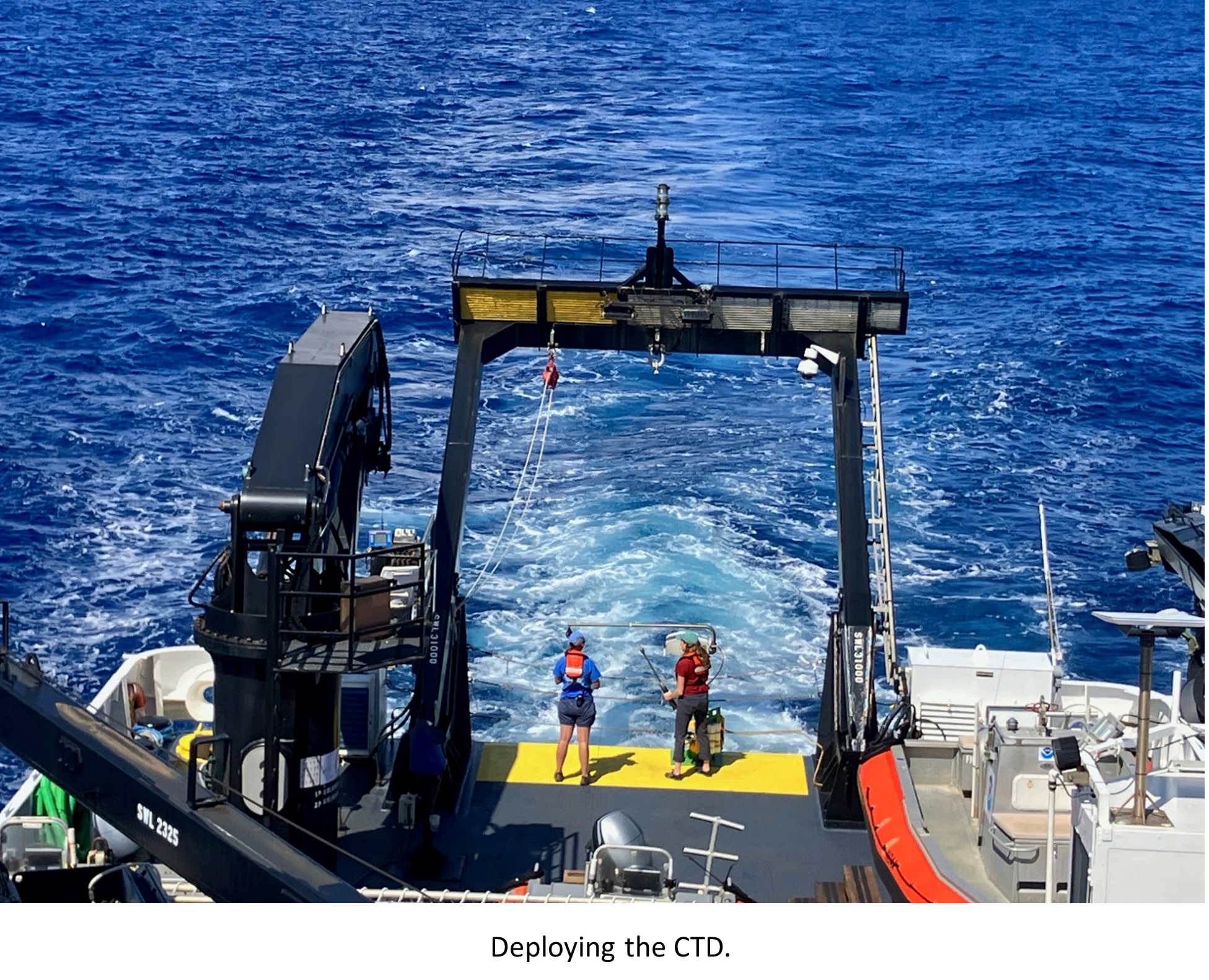
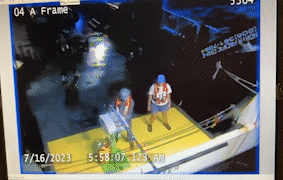
While the deck moved under our wide stances and the boat wake bubbled white foam on a crystal blue ocean, we pulled the CTD back in with the press of a button and some incredibly strong line. We watched it hop along in the distance, porpoising just like a dolphin. Sam, the awesome lead survey tech on board, asked me about my baby, how I was feeling being away from him. This is the first time that we have been separated overnight. Something about talking about him while I finished the steps of getting the CTD in made the whole process easier. Maybe it took my mind off of getting every little detail right, and allowed me to trust what I already knew. She made a comment earlier: you’re a mom, multitasking should come second nature.
I told her that I miss him so much, especially off shift. But that getting to do this work, be part of a mission at sea has been a beautiful focus and distraction. In my off hours, I worked on some writing, reading, puzzles, chatting, napping, snacking, and doing yoga on the top deck! Staying busy but savoring this “vacation” — a celebration of sorts of how far I have come in motherhood and in science.
On the way in, I began to feel the pressure in my chest and deep achy longing — which happens every few hours or so. The signal that as a lactating mammal with no baby to consume the milk I’m still producing, I need to use a silicone suction of sorts to extract it before I experience a lot more discomfort and possibly infection. I had no idea where I would be in the weaning process when I committed to this cruise, but I knew I had to give it a go. For a 17-month-old, nursing is still an important supplement (like a daily vitamin), immunity support, and nervous system calmer, but it is no longer a primary food source. Still, my body is confused. The longer I am away from him, the less I produce, which is also a difficult reminder of our separation.
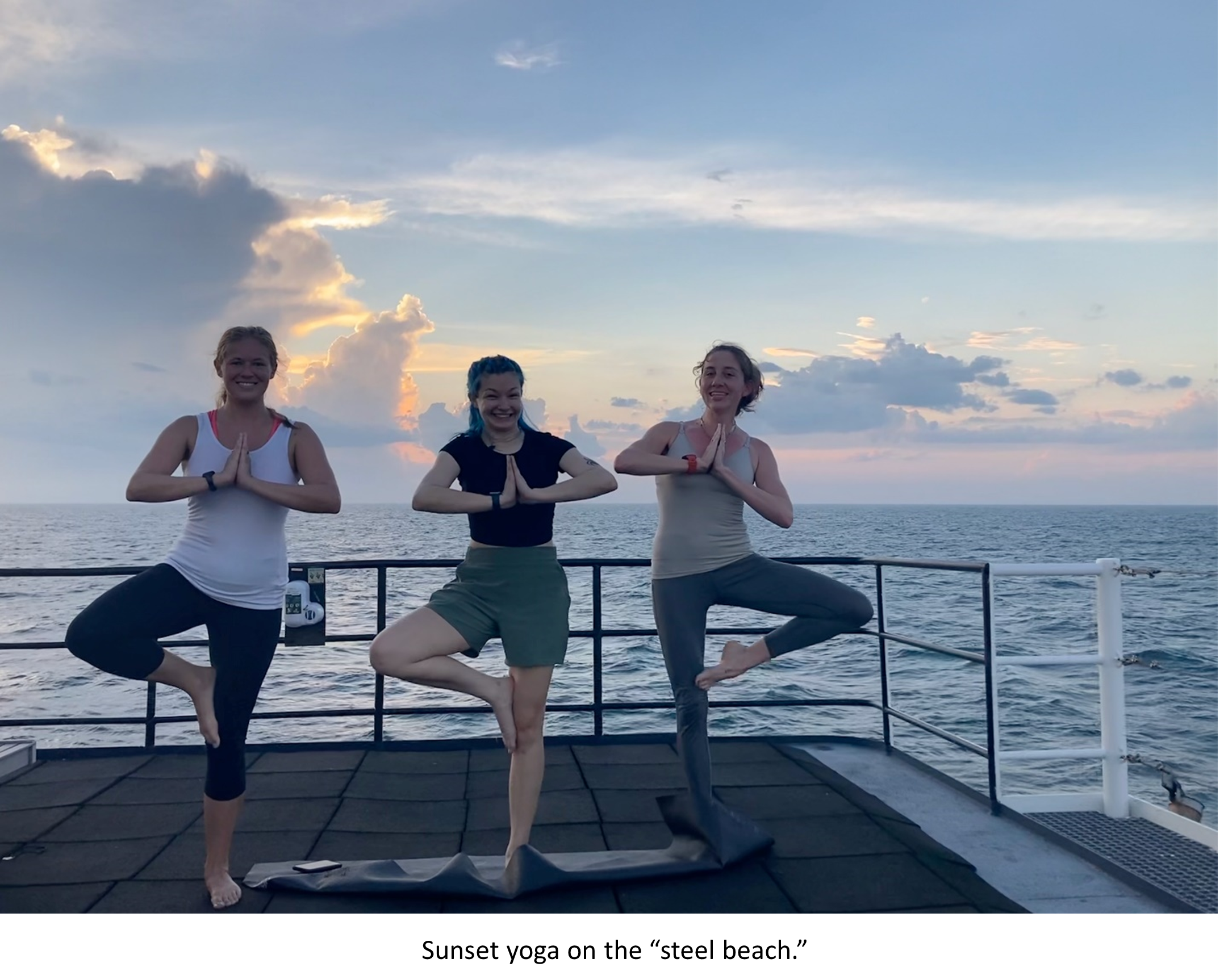
Working in marine science is a dream come true. I know that I want to show my son what is possible and the best possible version of myself. Seeking balance may be dizzying and sometimes painful, but it is worth it!
Being at sea is one of my favorite things in the world. Looking out portholes to rolling waves, feeling and smelling the ocean all around, learning oceanography through doing, watching the clouds and sun as the day moves on, and finding instant and necessary community in your shipmates.
Life is strange, and being a human is possibly the strangest. Forcing our bodies into scenarios where we weren’t quite made to be, pursuing knowledge and exploring. As I finish this blog, we are headed inshore to weather out the wind and swell just south of Ft. Sumpter Range, and I’m on my way outside to to catch one last sunset. All I can think is that I am so grateful for this experience, for my partner performing all the parenting duties solo back home, for my team at COMIT for helping make this happen so that I can be here, for the strangeness of it all.
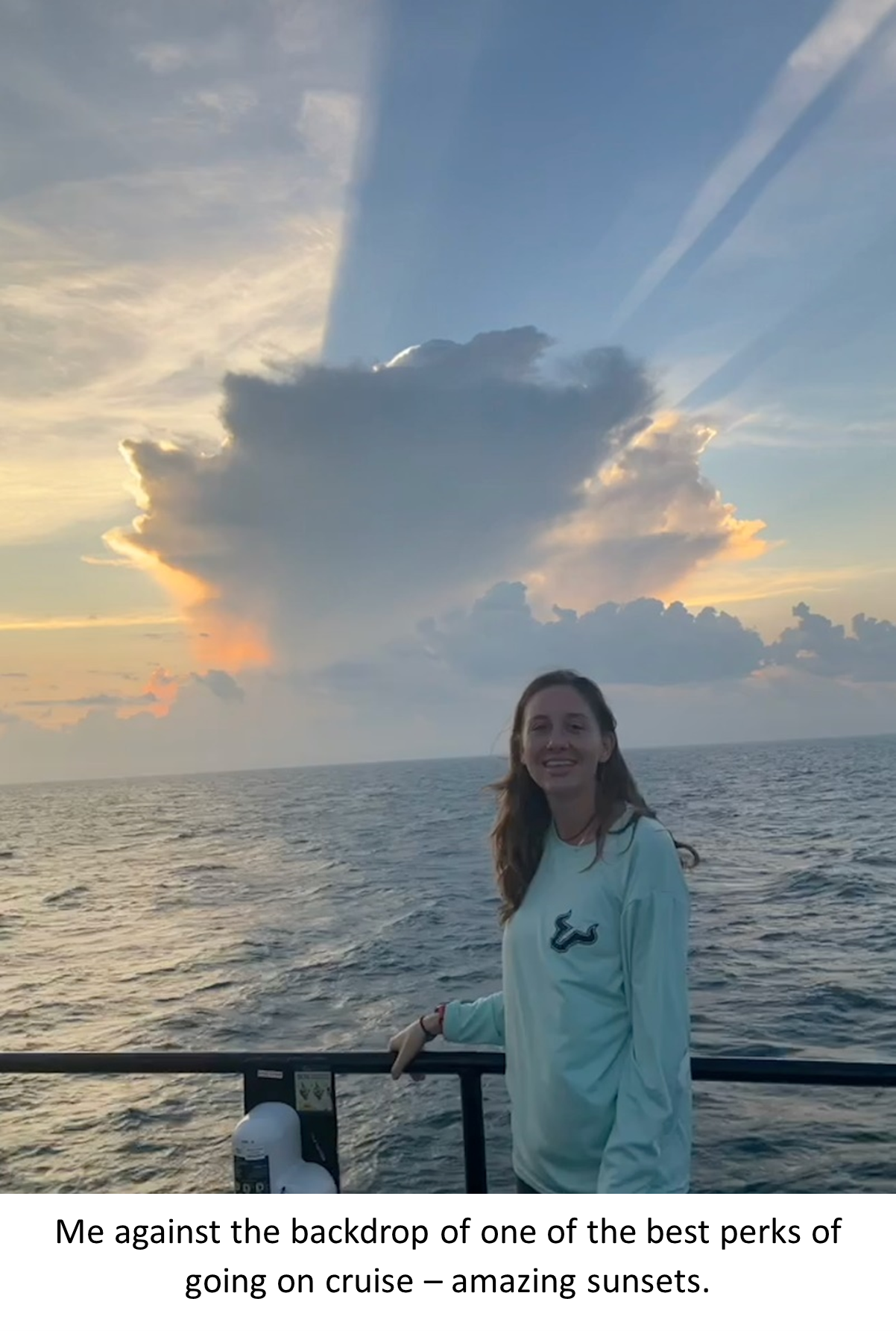
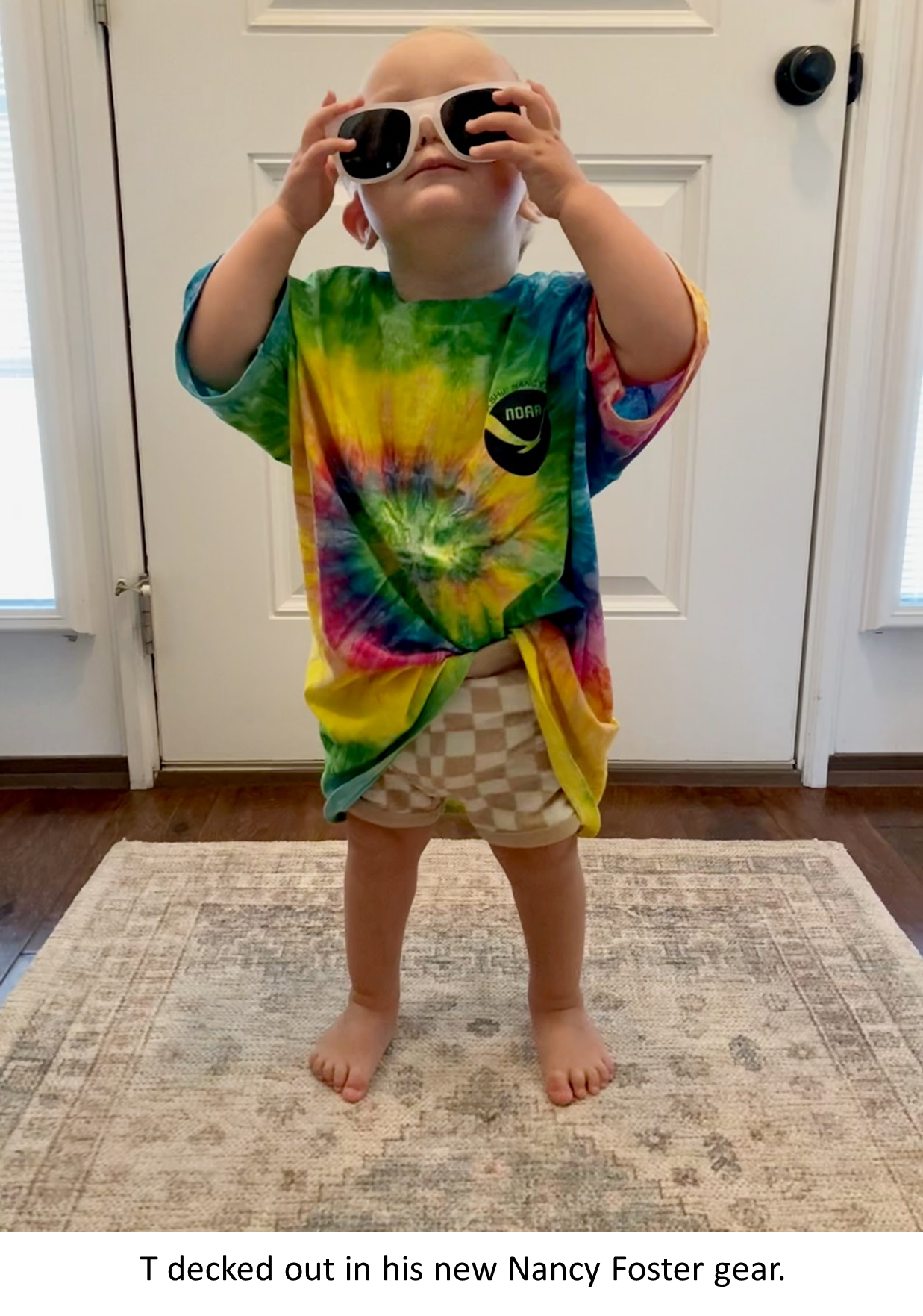
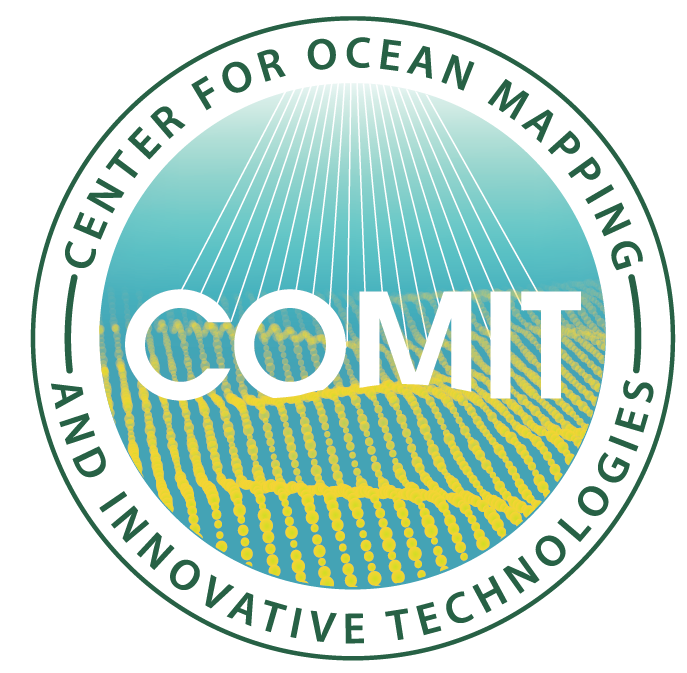
Recent Comments